Does Ghana import fish?
Ghana faces a significant gap between local fish supply and demand. This situation makes fish imports essential to feed its population. What does this mean for the country?
Yes, Ghana heavily relies on fish imports. These imports are crucial for meeting domestic consumption needs, as local production cannot keep up with the growing demand from its people.
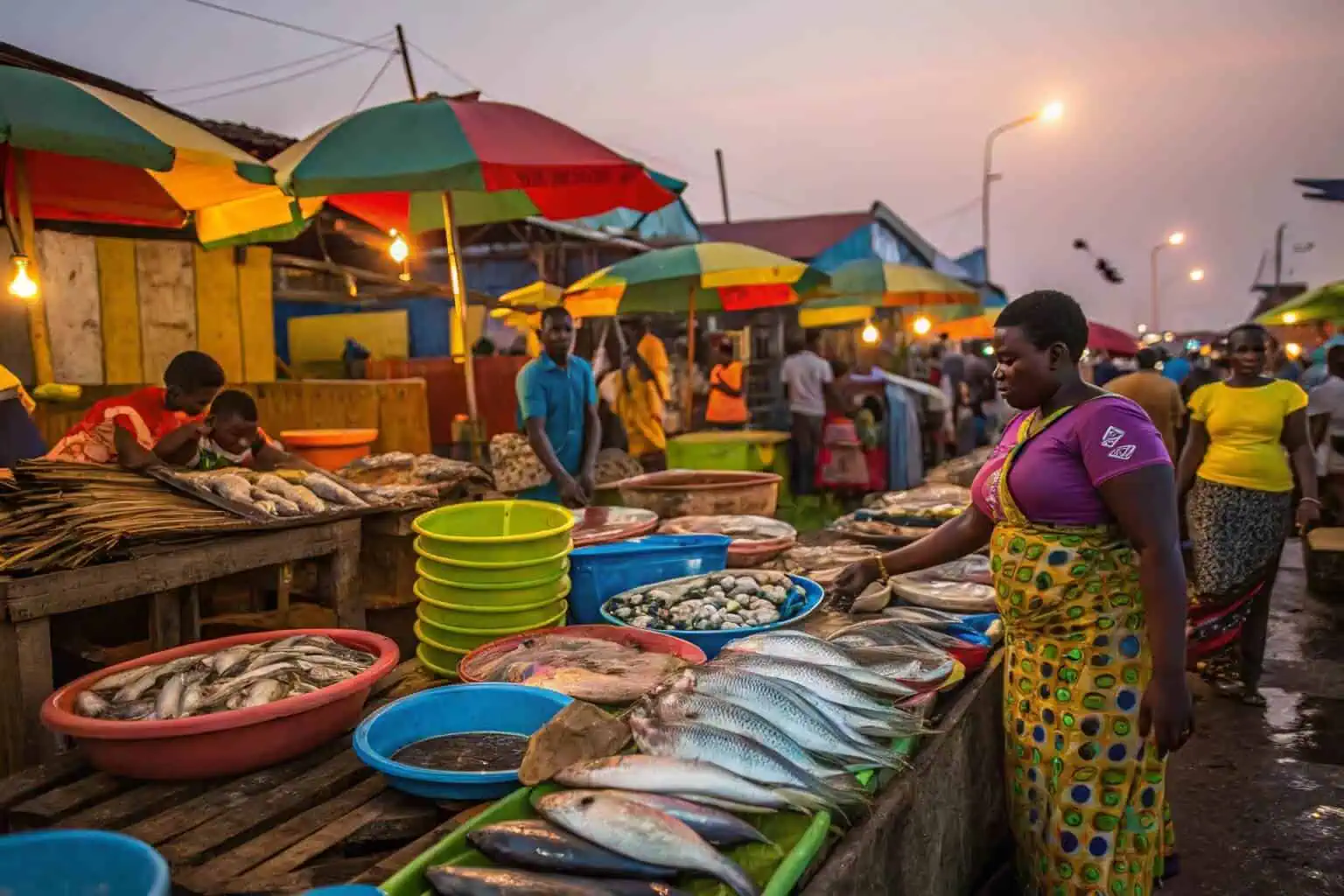
As someone who has spent considerable time analyzing Ghana's fisheries, I've seen firsthand how this reliance on imported fish shapes the nation's food security and economy. It's a complex issue with many layers, affecting everyone from local fishermen to international traders. Let's explore this further.
Where does Ghana import fish from?
Ghana's fish imports come from various global regions. This diverse sourcing strategy helps ensure a steady supply. But where exactly do these fish originate?
Ghana primarily imports fish from European countries like Norway and the Netherlands, Asian countries, notably China, and neighboring African nations such as Mauritania. This diversification helps maintain supply.
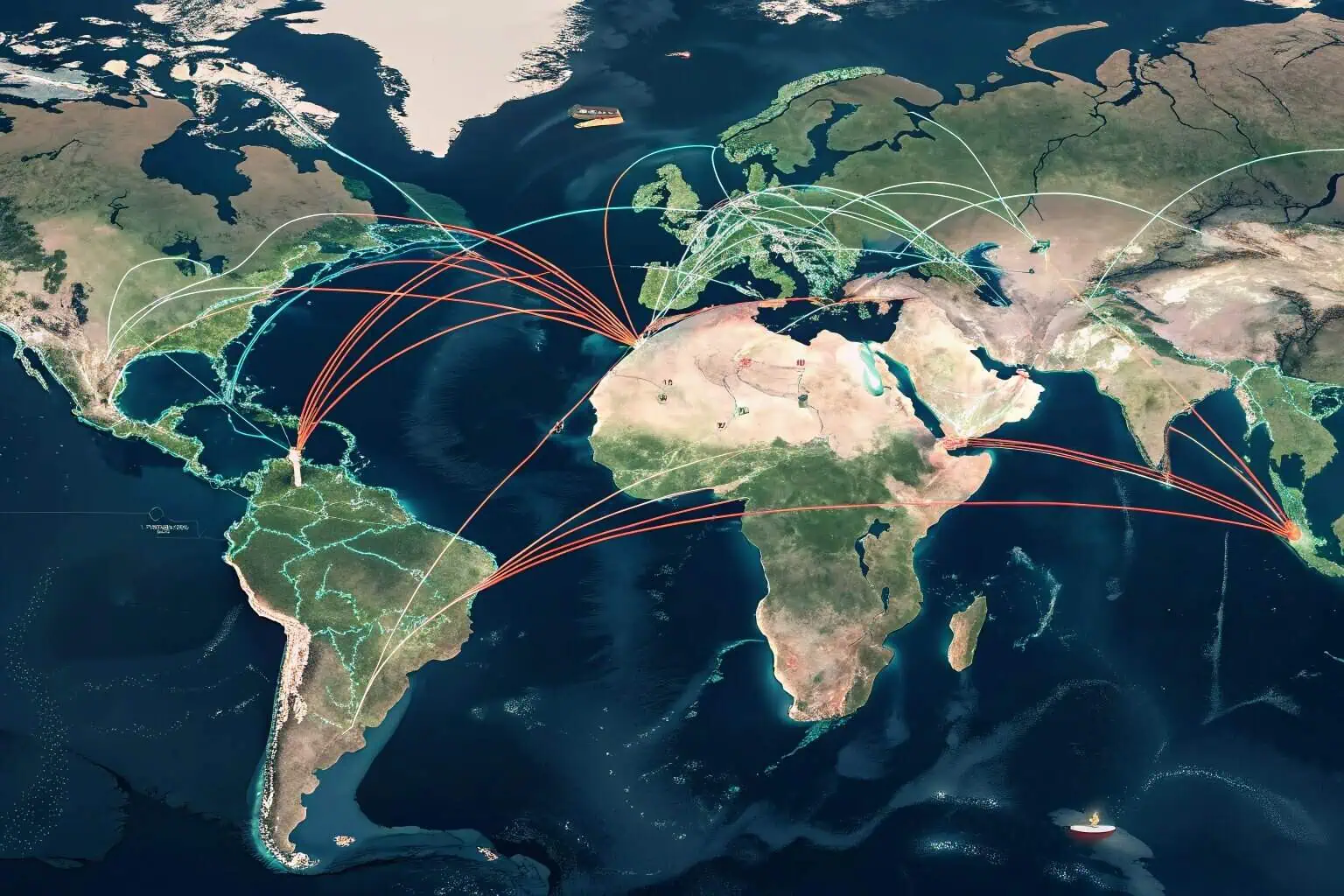
In my research, I've tracked shipments and spoken with importers, and it's clear that Ghana has established a wide network for its fish supply1. This isn't just about finding the cheapest source; it's about reliability and variety to meet diverse consumer preferences. The global seafood market is vast, and Ghana taps into several key players.
European Union: A Major Supplier
I've noticed that countries within the European Union, particularly those with strong fishing industries like Norway (though not an EU member, it's part of the European Economic Area) and the Netherlands, are significant contributors. They often supply pelagic fish2 like mackerel and herring3. These are popular in Ghana due to their affordability and suitability for traditional dishes. The cold waters of the North Atlantic yield high-quality fish that are processed and frozen for export.
| Country | Common Fish Types Exported to Ghana |
|---|---|
| Norway | Mackerel, Herring |
| Netherlands | Mackerel, Herring, Sardinella |
Asia's Growing Role, Especially China
My analysis also shows a substantial increase in fish imports from Asia, with China being a dominant player. Chinese fishing fleets are global, and they supply a wide range of fish, including tilapia and various demersal species. I've observed that Chinese suppliers are often competitive on price, which is a crucial factor for the Ghanaian market. They also offer processed and packaged fish4, catering to different market segments.
Intra-African Trade
It's also important to highlight the role of neighboring African countries. Mauritania, with its rich fishing grounds, is a key source, particularly for small pelagic fish. This intra-African trade is vital for regional food security and economic cooperation. I believe strengthening these regional supply chains5 could offer more resilience against global market fluctuations. The proximity also means potentially lower transportation costs and fresher products, though freezing is still standard for most imports.
What food does Ghana import the most?
Ghana imports a variety of food items to meet its population's needs. Among these, one category stands out. What is this key food import?
Fish is one of the most significant food items imported by Ghana. It plays a critical role in the national diet, serving as a primary protein source for many households.
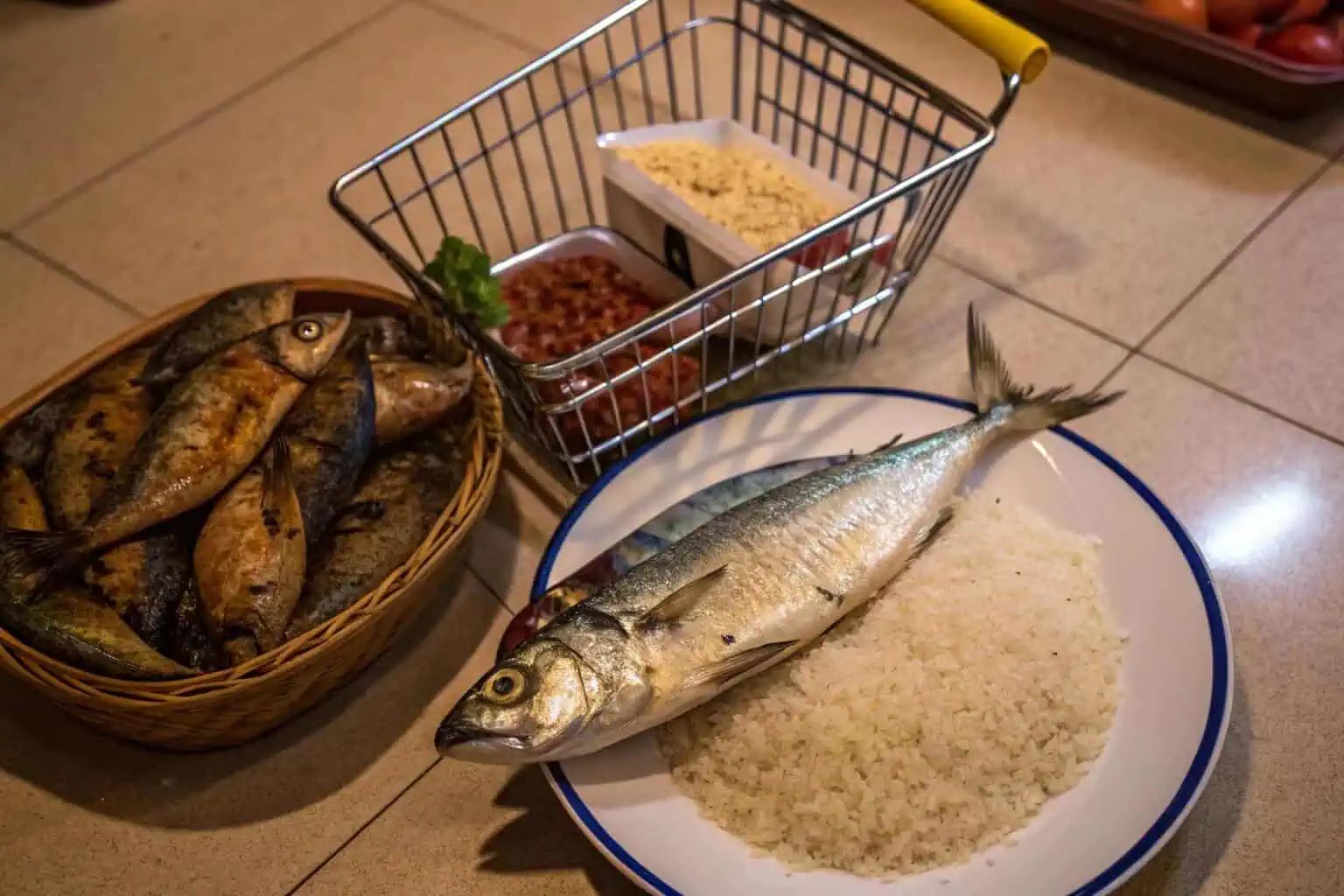
From my market observations and trade data analysis, it's evident that while rice, poultry, and cooking oils are also major imports, fish consistently ranks at the top. This isn't surprising given its cultural importance and nutritional value in the Ghanaian diet. The reliance on imported fish6 underscores a broader challenge in achieving food self-sufficiency.
The Central Role of Fish in Ghanaian Cuisine
I've always been fascinated by how deeply embedded fish is in Ghanaian culture and daily meals. From smoked fish in stews to grilled tilapia by the roadside, it's ubiquitous. This strong cultural preference drives consistent demand. When local catches fall short, imports naturally fill the void. Popular dishes like Banku with grilled tilapia7 or Kenkey with fried fish heavily rely on a steady supply.
Comparing Fish to Other Food Imports
To put this into perspective, let's look at other major food imports. Rice is a staple, and Ghana imports large quantities to meet demand. Poultry, especially frozen chicken parts, is also heavily imported. However, the per capita consumption of fish8 is remarkably high, making it a dominant import category by volume and value.
| Food Category | Import Significance | Key Drivers |
|---|---|---|
| Fish | Very High | Cultural preference, protein source, local shortfall |
| Rice | High | Staple food, insufficient local production |
| Poultry | High | Demand for affordable meat9, local supply gap |
| Wheat/Flour | Moderate | Bread and baked goods consumption |
| Cooking Oil | Moderate | Essential cooking ingredient |
This table, based on my understanding of import patterns, illustrates that while several food items are crucial, fish holds a special place due to the combination of high demand and significant local production deficits10. The economic implications are substantial, as a large portion of foreign exchange is spent on these food imports.
What is the fish demand in Ghana?
Understanding the scale of fish demand in Ghana is crucial. The country has a strong appetite for seafood. How much fish does Ghana actually need?
Ghana's annual fish demand exceeds 700,000 metric tons. This high demand, particularly in urban areas, significantly outstrips local production, which covers only about half of this need.
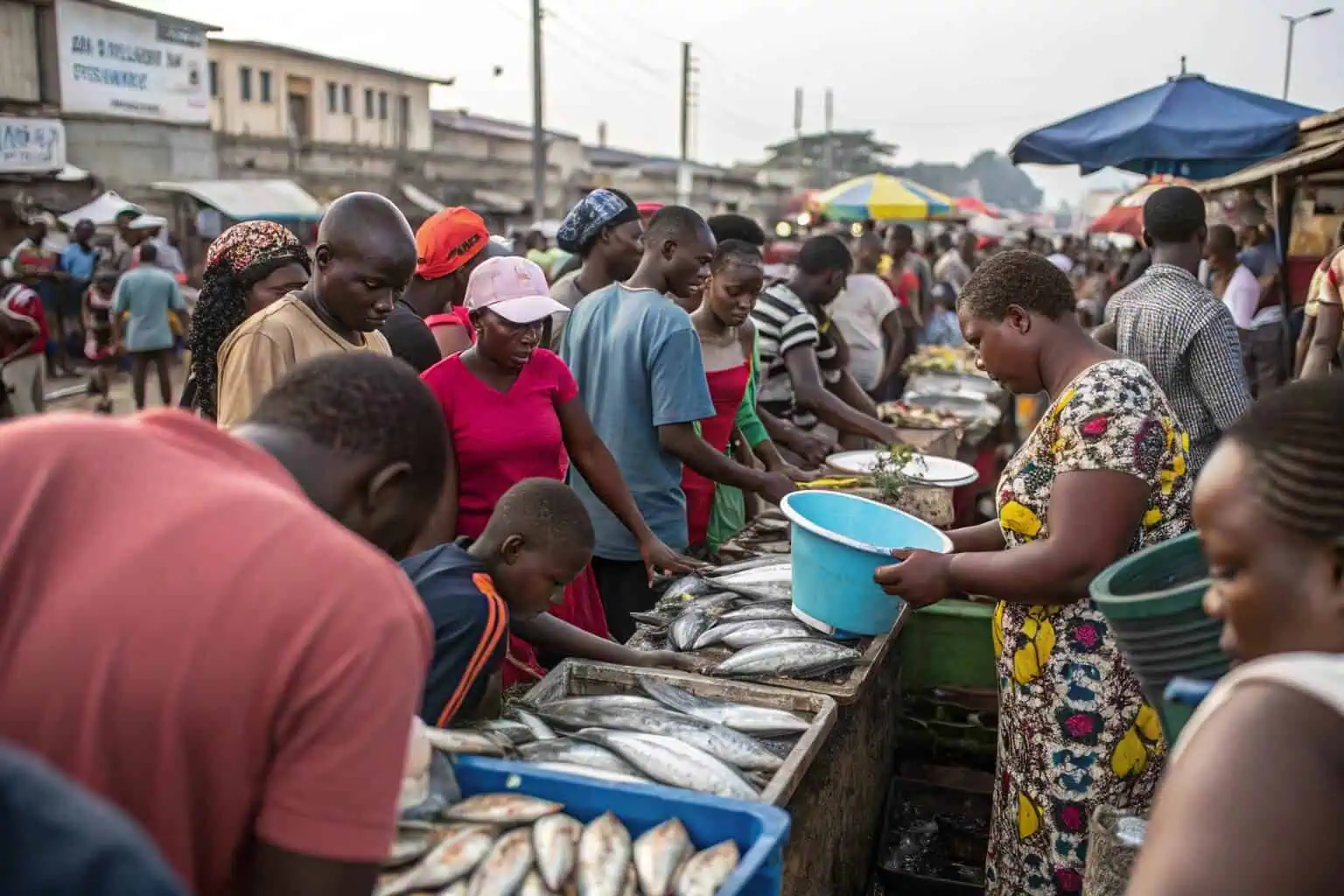
My field research, including visits to major markets like those in Accra and Kumasi11, confirms this immense demand. The bustling activity and the sheer volume of fish traded daily are striking. This gap between demand and local supply is what fuels the import market and presents both opportunities and challenges.
Factors Driving High Fish Demand
Several factors contribute to this high demand. Firstly, Ghana has a growing population, which naturally increases overall food requirements. Secondly, fish is a relatively affordable and accessible source of protein compared to other meats for many Ghanaians. I've seen how families rely on it for their daily nutritional needs. Thirdly, as mentioned, there's a strong cultural preference for fish12 in various traditional dishes.
Urban vs. Rural Consumption Patterns
I've observed that while fish is consumed across the country, demand is particularly concentrated in urban centers. Urbanization often leads to dietary shifts13 and increased reliance on purchased food. In cities, access to diverse types of imported fish is also greater. Rural communities, especially those near coastal areas or inland water bodies, might rely more on local catches14, but even there, imported fish often supplements the supply.
The Supply Gap and Its Implications
Local fish production in Ghana, from both marine and aquaculture sources, hovers around 400,000 to 450,000 metric tons annually, based on the data I've analyzed. This leaves a substantial deficit of over 250,000 to 300,000 metric tons that needs to be met through imports. This gap has several implications:
- Economic Impact15: Significant foreign exchange is spent on fish imports.
- Food Security16: Reliance on imports can make the country vulnerable to global price shocks and supply chain disruptions.
- Opportunities for Business: The consistent demand creates a large market for fish importers and distributors.
- Pressure on Local Fisheries: While imports fill a gap, they can also compete with locally caught fish, affecting the livelihoods of Ghanaian fishers.
Addressing this supply-demand imbalance requires a multi-pronged approach, including sustainable management of local fisheries and development of the aquaculture sector, alongside managing imports effectively.
Does Ghana import tilapia?
Tilapia is a popular fish in Ghana, often farmed locally. Given its local availability, does Ghana still need to import it? The answer might surprise you.
Yes, despite local aquaculture development, Ghana does import some tilapia. These imports supplement the domestic supply to meet the consistently high consumer demand for this particular fish.
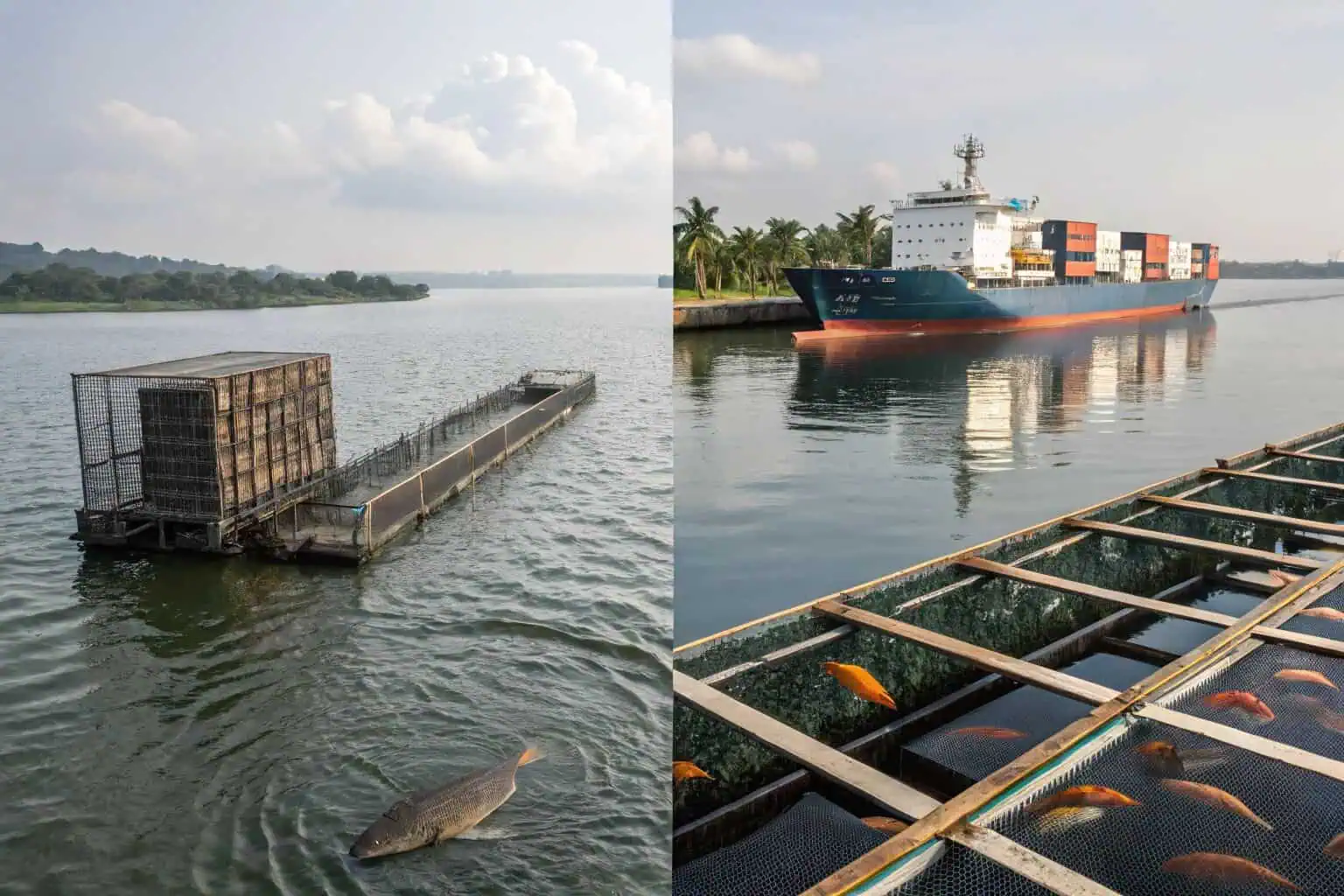
During my investigations into Ghana's aquaculture sector, I've seen impressive growth in local tilapia farming17, especially from the Volta Lake. However, the demand for tilapia is so strong, particularly for specific sizes or processed forms, that local production sometimes falls short, necessitating imports, often from countries like China.
The Rise of Tilapia Aquaculture in Ghana
Ghana has made significant strides in tilapia farming. The Volta Lake18 provides an ideal environment, and many commercial farms have been established. I've visited some of these farms and seen the efforts to boost local production. This has certainly helped to increase the availability of fresh tilapia in the market. The government and private sector have both invested in this area, recognizing the potential to reduce import dependency for this specific fish.
Why Imports are Still Necessary
Despite this local production, several factors lead to continued tilapia imports:
- Sheer Demand19: As with other fish types, the overall demand for tilapia can outstrip even the growing local supply, especially in urban areas.
- Price Competitiveness20: Imported tilapia, often frozen and from large-scale Asian aquaculture operations, can sometimes be cheaper than locally farmed fresh tilapia, particularly for certain market segments or when local production costs are high.
- Consistency and Volume: Large food service businesses or retailers might require a consistent supply of specific sizes of tilapia in large volumes that local farms may struggle to provide year-round without interruption. Importers can often guarantee this consistency.
- Processed Products21: Some imported tilapia might come in processed forms (e.g., fillets) that are not as widely produced locally or cater to niche markets.
| Source of Tilapia | Advantages | Considerations |
|---|---|---|
| Local Farms | Freshness, supports local economy, lower food miles | Can be pricier, supply can fluctuate |
| Imports (e.g., China) | Often cheaper, consistent volume, processed forms | Frozen, concerns about quality/sustainability sometimes |
My assessment is that while local tilapia farming is a success story and crucial for Ghana's food security, the market dynamics mean that imports will likely continue to play a role in the short to medium term to fully satisfy the nation's love for this fish. The key is to ensure that imports supplement, rather than undermine, the burgeoning local aquaculture industry.
Conclusion
Ghana's reliance on fish imports is a multifaceted issue, driven by high demand and local supply constraints. This creates economic opportunities but also food security challenges for the nation.
-
Understanding the dynamics of fish supply in Ghana can provide insights into its market strategies and reliability. ↩
-
Understanding pelagic fish can enhance your knowledge of marine ecosystems and their economic impact, especially in trade. ↩
-
Exploring the health benefits of these fish can inform your dietary choices and appreciation for seafood. ↩
-
Discovering this information will highlight the advantages of processed and packaged fish, important for understanding consumer preferences. ↩
-
This resource will help you understand the benefits of robust regional supply chains in mitigating global market fluctuations. ↩
-
Understanding the effects of imported fish can shed light on local economic challenges and opportunities for self-sufficiency. ↩
-
Learn about this popular dish, its ingredients, and its role in Ghanaian culture, making it a must-try for food enthusiasts. ↩
-
Understanding fish consumption in Ghana can provide insights into dietary habits and market trends. ↩
-
Investigating the factors behind meat demand can inform producers and policymakers about market trends and consumer needs. ↩
-
Discover how local production deficits affect food security and economic stability in various regions. ↩
-
Learning about these markets can help identify trends and business opportunities in the fish trade. ↩
-
Delving into the cultural significance of fish can enhance appreciation for Ghana's culinary traditions. ↩
-
This link will help you understand the factors driving dietary changes in urban areas, especially regarding the consumption of fish and other foods. ↩
-
Discover the significance of local fishing practices in rural areas and how they complement the demand for imported fish. ↩
-
This resource will provide insights into how fish imports affect Ghana's economy and foreign exchange. ↩
-
Learn about the risks associated with food security in Ghana due to reliance on fish imports. ↩
-
Exploring this link will provide insights into the advantages and growth potential of tilapia farming in Ghana's aquaculture sector. ↩
-
Discover the unique characteristics of Volta Lake that contribute to its ideal conditions for tilapia farming. ↩
-
Examining the impact of demand on tilapia imports can provide insights into market trends and consumer behavior. ↩
-
Understanding price competitiveness can help consumers make informed choices about tilapia purchases and support local economies. ↩
-
Exploring the benefits of processed tilapia can reveal options that suit various culinary needs and preferences. ↩